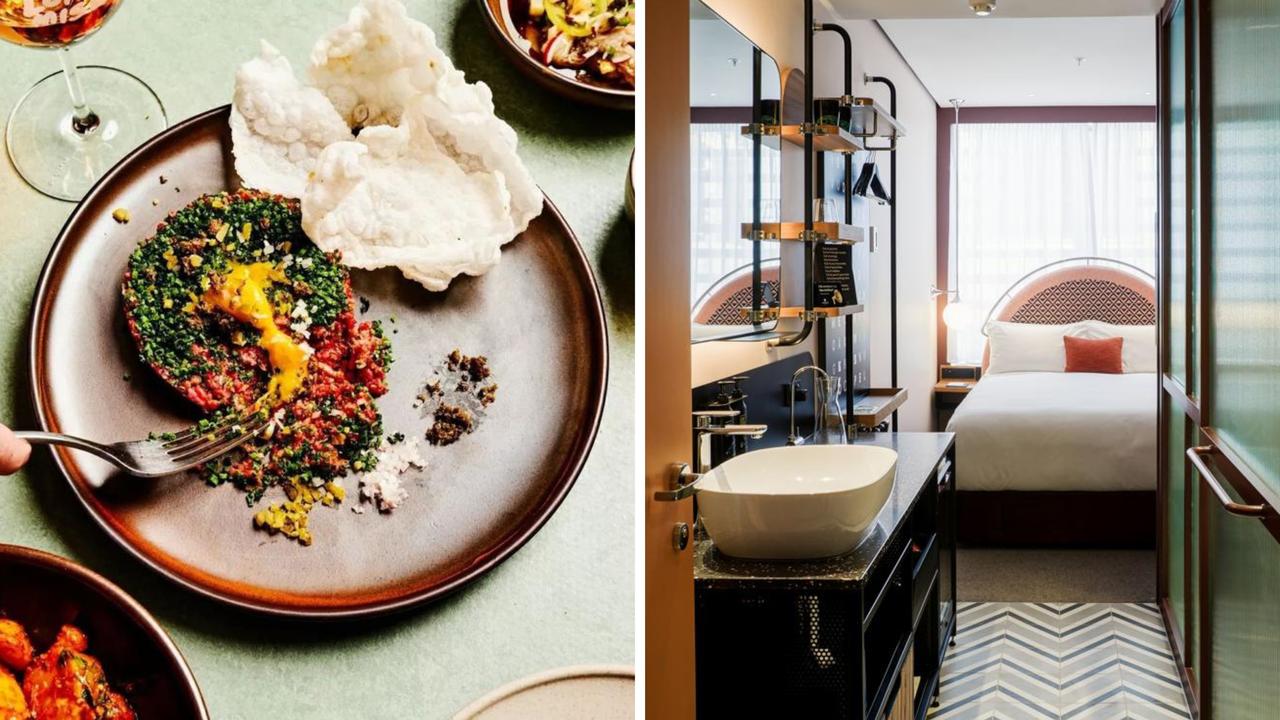New penguin suits
IN a happy feat, Phillip Island has upgraded its attractions and while the fairy penguins have retained their star status, many other highlights now await visitors.

THEY look so utterly huggable – those impish, furry fools – as they fall on to the sand and waddle hurriedly up the beach.
Either huddled together to avoid predators or alone and dizzy with fear, they race from the waves to shelter before an enthralled sea of humans.
They are the world-renowned fairy penguins, the world's smallest and Phillip Island's main tourist attraction.
In fact, the small island off the Victorian coastline has created an entire tourism industry around their nightly migration from sea to shore, becoming Australia's most popular wildlife attraction.
But for holidaymakers who have already been there and seen them, or for others, like me, who question the motives of these suspiciously cute birds, it's good to know Phillip Island is growing up.
It's no longer difficult to find things to do while waiting to see the nightly Penguin Parade, and it's a lot easier to entertain yourself on Phillip Island over a long weekend.
The non-profit organisation behind the show, Phillip Island Nature Parks, is funding more attractions involving seals, koalas and the island's history.
Long-time locals and sea-changing entrepreneurs are also adding to the island's drawcards, establishing activity and theme parks, wineries, restaurants, and more quirky bed-and-breakfast establishments.
This new Phillip Island is certainly different from the place I visited on a family day trip in 1999 – a trip that made penguins my enemies.
Like most visitors, we came for the day and stayed for the penguin show. The show involved sitting on a simple wooden bench on Summerland Beach and waiting for the migration to begin.
Instead, an icy gale direct from Antarctica whipped through our summer clothing. My goosebumps got goosebumps. The crowd turned red, white, then blue, and began to huddle to preserve body heat. Hello hypothermia.
Meanwhile, the fairy penguins slipped to the shore out of our sight, before appearing at our backs to deliver a final insult.
With this chilly image in mind, I was reluctant to return to Phillip Island, even to deliver penguin revenge (served cold, naturally).
Thankfully, even the Penguin Parade has changed a lot.
While operators are yet to figure out how to enclose and heat the entire event, they offer more than just a wooden bench and gift-shop beanies.
Benches have been swapped for grandstands, overhead lighting ensures you can't miss those cunning birds, and new walkways let you watch them find their burrows.
Even more impressive is the addition of a new boardwalk and seated area to the right of the grandstands – the same spot those fairy penguins crept down. The Penguins Plus Viewing Platform costs a little extra, but it appears to get some shelter from the wind.
A ranger-guided tour and an "Ultimate Penguin Tour" are also available for serious penguin-watchers (the latter involves night-vision scopes), but the best has to be the Penguin Sky Box – a seat in an enclosed, elevated viewing tower.
It's only available to five people per night, but it just might save you from throttling one of Australia's precious natural treasures in the car park after the show.
Being that these tours only occur at nightfall, visitors used to be stuck for something during the day. Daytrippers are now more likely to argue over which sights to see.
For nature buffs, there are two main attractions – the Koala Conservation Centre and the new Nobbies Centre.
The first is a very different type of koala exhibit. You get to see the sleepy, leaf-munching marsupials up close and in their own environment by walking a series of boardwalks and looking into nearby trees.
Sometimes hiding, sometimes walking along the railings, daring you to pat them, these koalas are cared for by rangers and volunteers happy to share their koala tales with visitors.
The Nobbies Centre, meanwhile, is the newest addition to Phillip Island's portfolio, and is certainly the most ambitious. Built in a stunning location overlooking the Nobbies cliffs and Bass Strait on Phillip Island's headland, it replaces a storm-damaged cafe and is a huge step up.
The vast building's main attraction is a camera link with a nearby 16,000-strong fur seal colony. Using one of several kiosks, you can aim the remote video camera with a joystick and watch the seals as they play, swim or even fight their fellow seals.
As well as several educational displays, and a fully equipped indoor playground, the Nobbies Centre has more than the usual tourist fare and a function room overlooking the rocks. The multimillion-dollar addition to Phillip Island was not erected without controversy, with many locals opposing the centre due to its potential environmental impact, but it seems to be winning new fans.
But it's not just Phillip Island's official bodies that are transforming this windswept and wintry island. Long-time locals and new settlers are creating tourist attractions. Highlights include two wineries – Phillip Island Wines and The Purple Hen, Rhyll Fishing Farm where they let you catch your own dinner and they cook it for you, a helicopter service that can let you fly down the Island's race track at a competitive speed, and a theme park full of genuinely stumping mental puzzles called Amaze 'N Things.
Even if one was to hold a grudge about some of its small inhabitants, it would be hard to fault Phillip Island in the charm stakes or, now, for lack of something to do or see. Just make sure you bring a warm, wind-proof jacket.
- Jennifer Dudley visited Phillip Island as a guest of Tourism Victoria.



